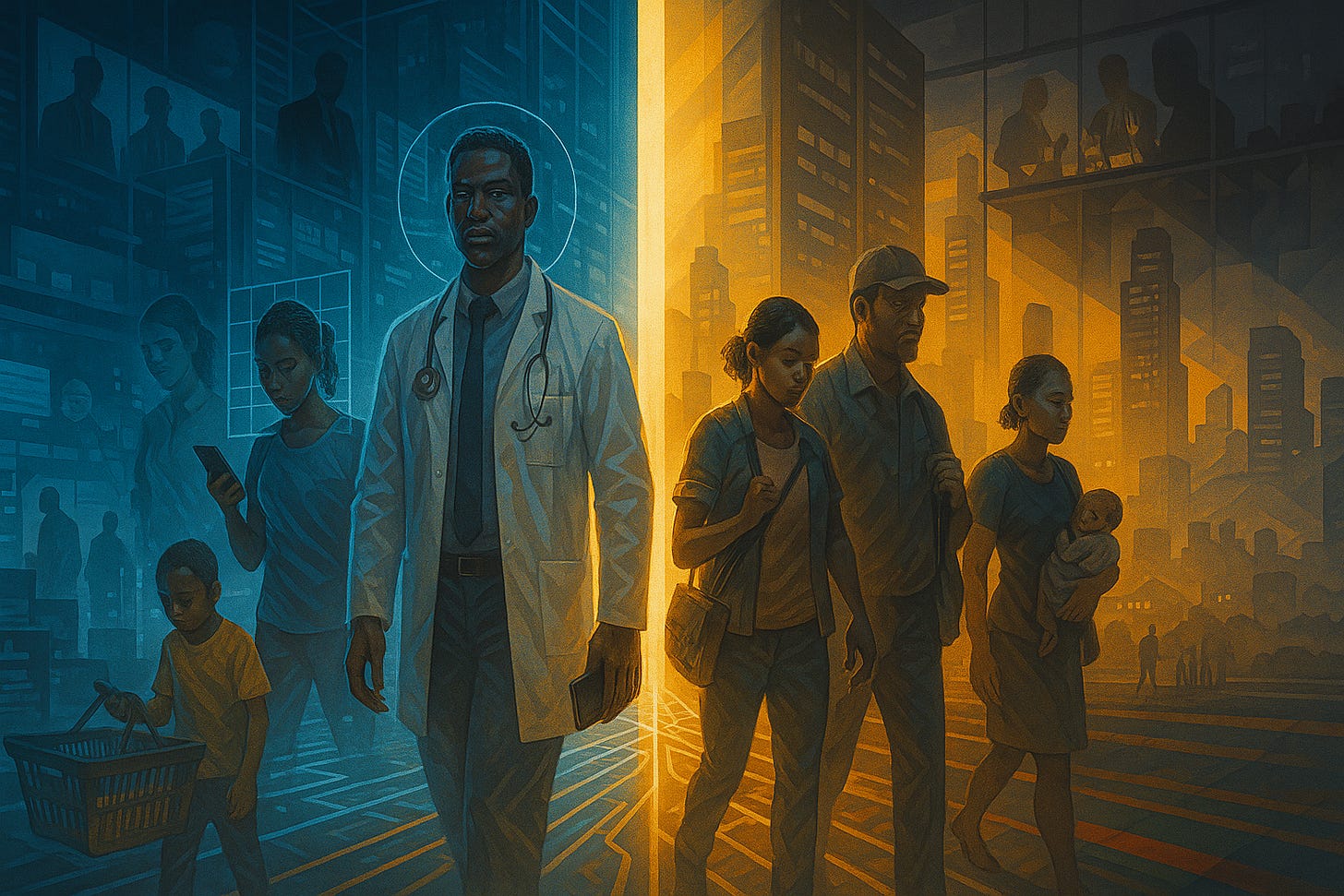The Moral Pivot: Civic Visibility vs State Opacity
Liberal democracy depends on a simple but essential asymmetry: citizens are private, governments are visible. Power must be accountable...
Written By: Bryan Theunissen
Every step, every purchase, every card swipe leaves a trace. The roads you drive, the shops you enter, even the chemical signatures your body sheds—all are readable to invisible systems. Yet the institutions wielding this data remain hidden, largely unconstrained, and rarely accountable. Citizens move through a world under silent observation, trapped in a modern panopticon where the state’s unseen gaze shapes behaviour, while power itself remains cloaked.
Increasingly, the citizen is treated not as a person but as an administrative category: a line in a database, a record, a set of measurements. Every movement, every transaction, every small choice contributes to a profile that feeds the machinery of control. In Foucault’s panopticon, inmates regulate themselves because they might be watched; in today’s systems, we internalise compliance before any intervention occurs. Citizens exist to legitimise authority, while the state acts largely for itself, hidden in plain sight.
Agency and autonomy shrink beneath this quiet pressure. Algorithms, policies, and platforms guide behaviour, keeping people “inside the lines.” We may choose which picture to colour and which colours to use—but drawing our own picture is discouraged. Deviations are noted, categorised, corrected. Life is defined by exposure to the state, not by lived experience. This inversion—the moral pivot at the heart of modern governance—pervades ordinary life unnoticed.
Liberal democracy depends on a simple but essential asymmetry: citizens are private, governments are visible. Power must be accountable; freedom must be protected. When that balance shifts, liberty diminishes. Surveillance expands under the guise of efficiency, safety, or progress, while the architecture of governance—rules, oversight, auditing—remains opaque. Without this asymmetry, citizens are reduced to compliance, and democracy becomes a performance rather than a practice.
Governments claim transparency, yet the word often conceals more than it reveals—secret algorithms, hidden decisions, obscured logs. To reverse this imbalance, we must move beyond rhetoric to structural reform. Surveillance and oversight must be built into the architecture itself, like safety mechanisms in industry. Machines cannot operate without guards. Interlocks halt moving parts. Dead-man switches demand attention. Fail-safes prevent catastrophe even when humans fail. Ethics, law, and accountability should be embedded into the systems that govern our lives.
This principle is embodied in Civic Cryptography—a framework that protects privacy by design and ensures state accountability. Data is collected, split, and distributed across independent servers. Each stream alone is meaningless. Streams are recombined only through multi-party authorisation, requiring:
Judicial oversight: court orders and multi-key approvals
Independent auditing: verification that no single actor can misuse data
Cryptographic enforcement: tamper-proof logging and irreversible access records
Civic Cryptography achieves three outcomes simultaneously:
Automatic protection for citizens — personal information cannot be exploited without explicit oversight.
Enforced state accountability — any action is logged, auditable, and publicly reviewable.
Legitimate, responsible usage — authorities can use data while preserving individuals’ fundamental privacy.
This framework inverts the logic of the panopticon. Where Foucault’s design made citizens visible and the state invisible, Civic Cryptography shields citizens and exposes power to scrutiny. Modern panopticons—from social credit scores to mass data collection—track medical choices, political participation, and social activity. Civic Cryptography allows these systems to function without reducing citizens to permanent data points.
Some may argue these safeguards impede efficiency. Yet, as with industrial interlocks, the cost of prevention far outweighs the risk of unchecked power. Structural design preserves freedom without sacrificing functionality. Safety and liberty can coexist when systems are intentionally crafted.
Restoring the moral pivot dismantles the panopticon, freeing citizens to think, err, and dissent as humans, not data points. Governments exist for the citizen, not the other way around. Safety, accountability, and dignity are embedded into systems by design. Privacy is default. Exposure is accountable. Freedom becomes resilient.
When this balance is maintained—when citizens are private and the state is visible—democracy is lived, not performed. Citizens stop being categories and become people again. In reclaiming this pivot, people preserve their souls.
Bryan Theunissen is a South African doctor with a stubborn streak of optimism. Even after years of watching bad policy win, he still insists on pointing to better choices.




Excellent!
An awesome paragraph:
"Liberal democracy depends on a simple but essential asymmetry: citizens are private, governments are visible. Power must be accountable; freedom must be protected. When that balance shifts, liberty diminishes. Surveillance expands under the guise of efficiency, safety, or progress, while the architecture of governance—rules, oversight, auditing—remains opaque. Without this asymmetry, citizens are reduced to compliance, and democracy becomes a performance rather than a practice."